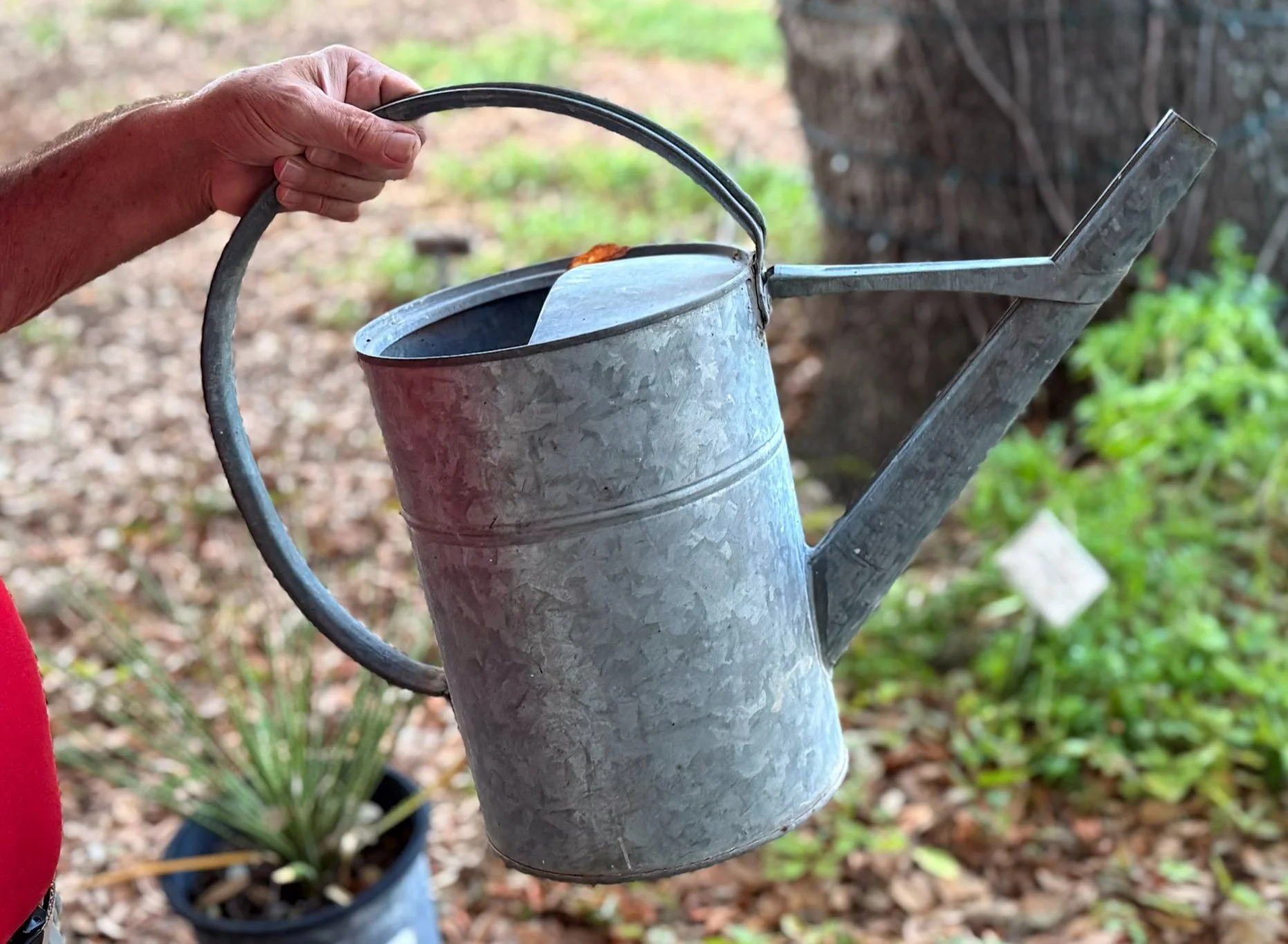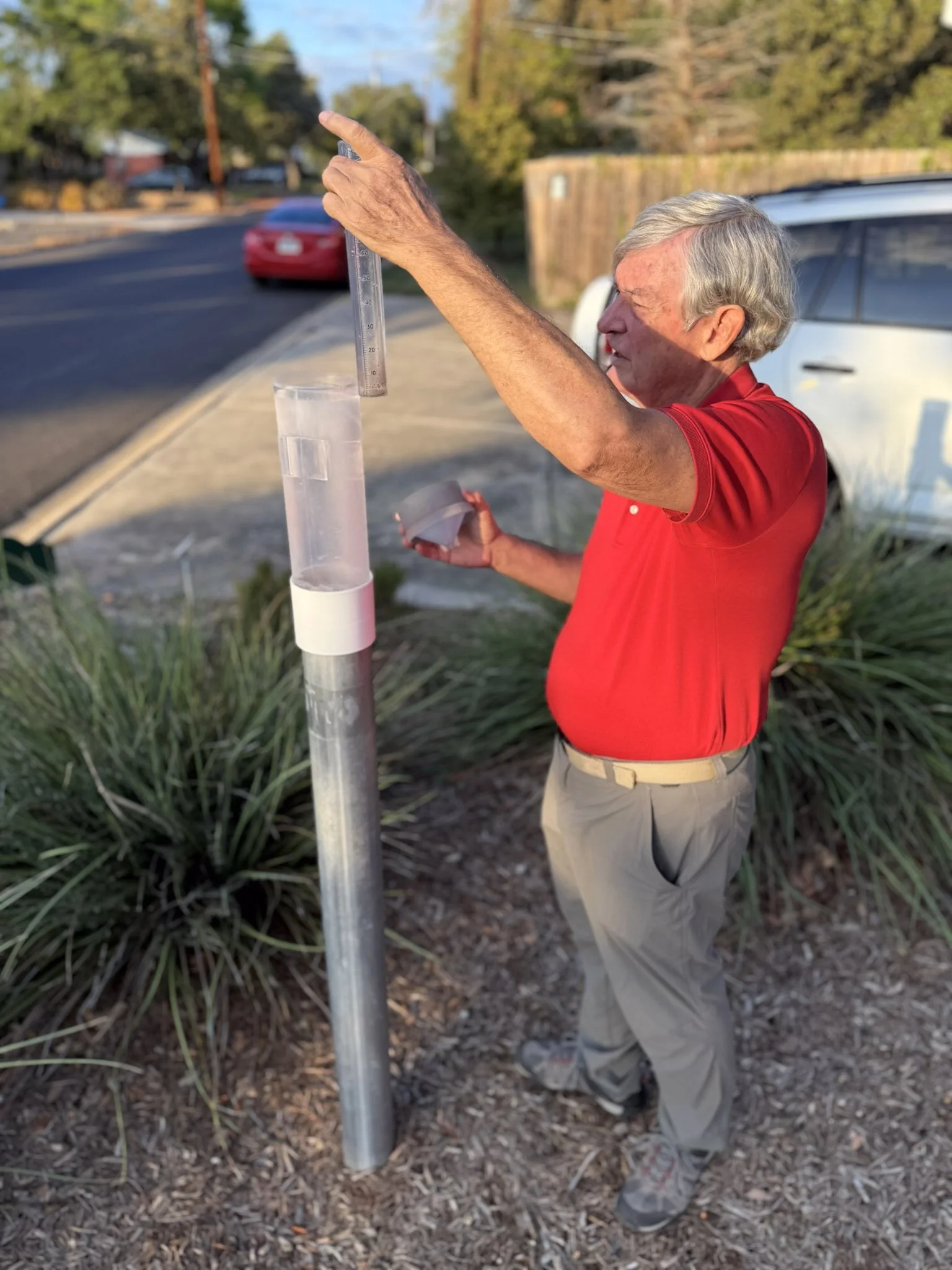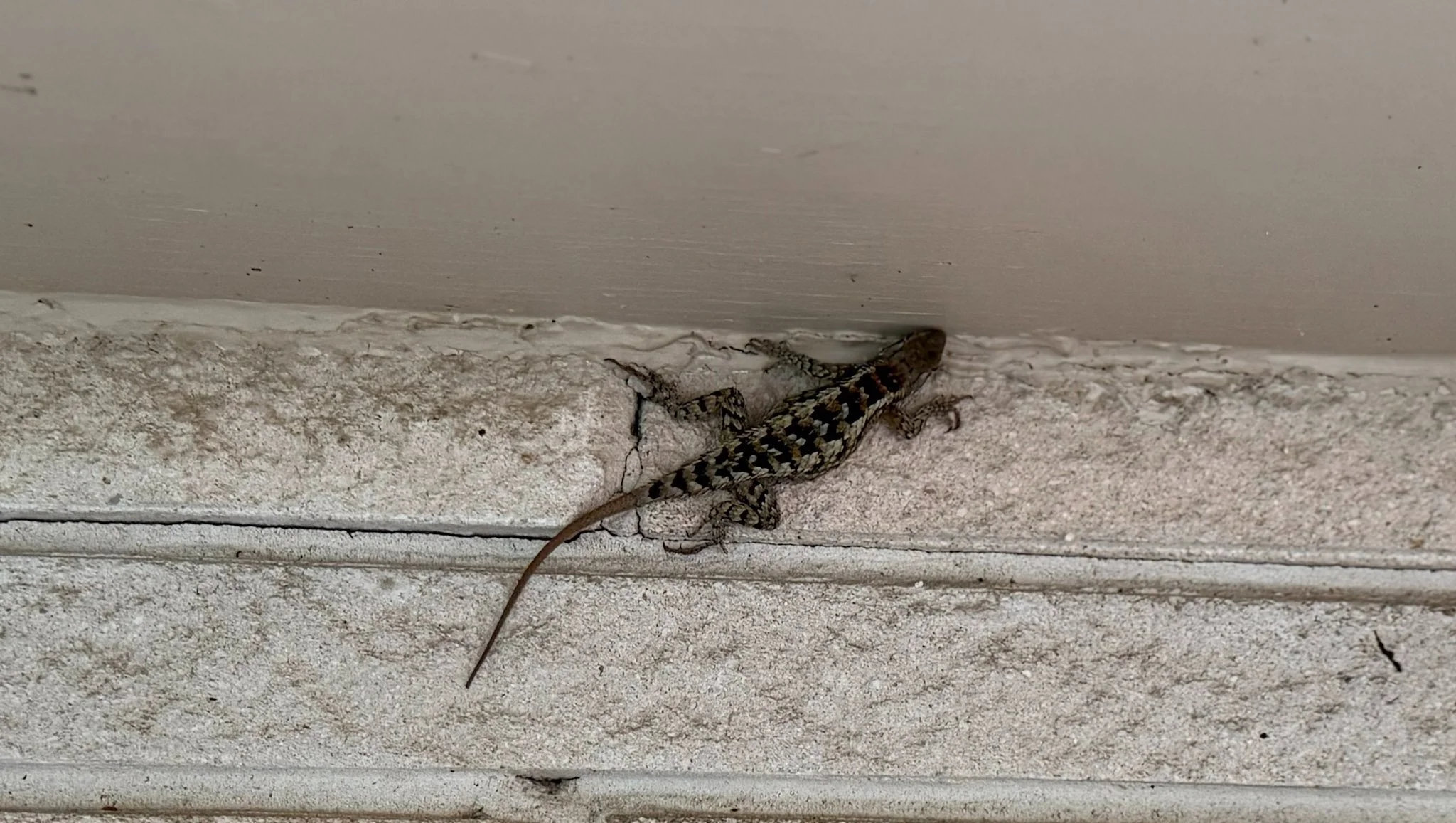A Really Green House
Conservationism in Practice
By Berit Mason
Photography by Nick Blevins
Alan Montemayor checks levels in front of his home
Greenhouses nurture plants—and so does Alan Montemayor, the owner of a local “green” house, who nurtures his many drought-resistant plants and shrubs with collected rainwater. Energy from sunlight that beats down with Texas-level intensity is stored in solar panels on his roof, powering his home and EV cars, while rain stored in large, shiny tanks nourishes his vegetable garden.
Montemayor, retired engineer and Chairman of the Alamo Group of the Sierra Club, has transformed his Northside home into a “green” house, a place so energy-efficient, his electric bill runs as low as $19 a month.
The civic-minded civic leader has given tours of his house to select guests. Groups of 20 to 90 visitors at a time have learned how to make their own home energy-efficient and ecologically friendly, too. Montemayor shared with Scene In SA how he transformed his Castle Hills home to reduce consumption.
Nature in Mind
A large Texas Spiny Lizard spotted under the eaves of Montemayor’s home
His front yard is a prime example of xeriscaping, a lowmaintenance landscaping solution emphasizing water conservation through, for example, the use of drought-tolerant plants.
“When we started in 1991, we planted a variety of plants. Some of them made it through the summer, some didn’t. What you see here is the distillation of what works well in this area,” Montemayor explains. “We have signs in front of most of the plants so that people who walk by, if they see a plant they really like … [or] want for their yard and wonder what it is, they can immediately identify it and go to their nurseryman and ask for Red Autumn Sage.”
Montemayor has taken a very methodical, ecology-forward approach to his garden. It is only natural that Montemayor is head of the local Sierra Club, an environmental organization founded by “Father of the National Parks” John Muir, a prominent American preservationist, naturalist, botanist, and zoologist.
Xeriscaping has been found to improve local biodiversity by providing native vegetation for insects and wildlife. “Every plant is planted for bees, butterflies, bats, and pollinators.
This Red Yucca—the hummingbirds love that. The American beautyberry—the mockingbirds love this stuff.” Montemayor and his wife often enjoy lunch outside, entertained by visiting birds and butterflies dipping in and out of his “bird watering station.”
“We create a food source and refuge that animals have adapted to over the millennia. A healthy ecosystem is healthy for humans; plants that act as food sources for insects, bugs, butterflies [are] the basis for the food chain.”
Rainwater, A Valuable Liquid Asset
Xeriscaped yards still need water, and Montemayor is ruthless about collecting rainwater with his sophisticated water-saving system, to feed his shrubbery and vegetable garden.
Montemayor’s gutters are enclosed with fine-mesh screens that direct rainwater straight into the storage tanks without splashing. Hoses at the ends of some gutters drain directly underground, watering the roots of his plants, reducing urban runoff, and recharging groundwater.
Alan’s Rainwater Harvesting Set-Up Specs:
Two stainless-steel rainwater collection tanks, 1600-gallons: $6,828
6-inch EasyOn gutter screens, 300 linear feet: $800
Piping, valves, base material, electrical supplies, hardware, and plumbing: $300
Water pump: $300
Total Cost: $8,228
COST SAVINGS: REDUCED 2023 WATER BILL TO $29 PER MONTH.
“This system does not reduce household water use,” he says. “However, it fully supports the garden and landscaping, which reduces [our] monthly water bill. In San Antonio, 55% of water is used outdoors.” According to one study, households in arid states like Arizona showed 75% of their potable water usage was dedicated to watering residential and urban lawns.
Examining his drying bald-cypress, Montemayor explains: “We are in the middle of a climate change. We have drier conditions, less rain, and more days over 100°F. San Antonio has always been a semi-arid area. We all have to do what we can to cut back on water consumption, or we will run out of fresh water.”
Meteorologists report an emerging La Niña may bring “warmer-than-average temperatures” to the South and “potential drought conditions across the southern U.S.” this winter, expected to persist from January to March 2025.
Further, water resources face large-scale commodification, with creeping efforts to privatize it. Nestlé SA, owner of water brands Pure Life, Perrier, San Pellegrino, and Acqua Panna, announced to its shareholders in November 2024 that its growth plan included separating its water business into a global standalone business beginning this year. Spring water bottlers, including Nestlé, have been accused of buying up water rights and depleting natural water resources and aquifers for profit.
Harvesting rainwater seems a natural step to prepare for a future threatened by scarcity.
One of Montemayor’s two 1600-gallon rainwater collection tanks
Cutting Bills and Consumption
In his backyard, Montemayor has eleven raised vegetable beds, producing cost-free, pesticide-free produce like lettuce, spinach, radishes, and herbs. These 6-feet by 3-feet galvanized steel raised garden beds cost him about $500.
“You make a salad out of this and you go, ‘Wow!’” he says. Homegrown produce has real taste, and saves on the food bill.
Montemayor’s compost bin is full of leaves and decomposing food scraps fertilizing his plants and vegetables. It attracts animals, but the environmentalist in him says that’s okay. His towering live oaks grow wild—the branches are home to birds, squirrels, and foxes. “We absolutely love the ecosystem taking off. The fox, the raccoon, the skunk, possum, squirrels come, like a feeding station.”
In addition to cutting food costs, Montemayor has seen savings on other bills. His ten solar panels can generate more power than they consume. “Essentially, we’ve driven two electric vehicles for free in the last four years.” The panels effectively paid for themselves in two years.
Montemayor aims to convert his last three gas appliances—a water heater, clothes dryer, and furnace— to heat pump electric systems. Their home will then be powered mostly by the sun, reducing their reliance on the grid.
Recognizing the cost-prohibitive nature of full-on xeriscaping, rainwater harvesting, and solar panels, Montemayor offered a few insights to reduce your energy usage (and bills!): “Install insulation in the attic, in the walls. Put in new doors and windows that are energyefficient. Consider energy-efficient appliances and light bulbs. Consider smart thermostats, ceiling fans.”
Montemayor recounted he was able to reduce his summer electric bills significantly, citing that he (very understandably) does not enjoy shelling out money to public utility companies. “We have a love-hate relationship,” he says. For example: “SAWS makes their money from the water volume sold. If everyone did this, San Antonio would need a tenth of the water that we are currently using.” Montemayor is an ambassador of underconsumption.
An engaged community leader, Montemayor has even knocked on the doors of HEB’s corporate offices, seeking a stronger environmental commitment. “One thing the Alamo Group of the Sierra Club does [is] we lobby for more sustainable energy and water policy for the city. This house is really a demonstration of how we can live lighter, in all aspects, on the environment.” ■





